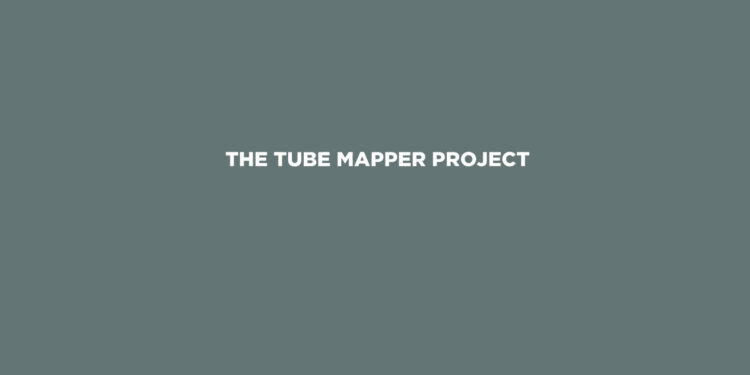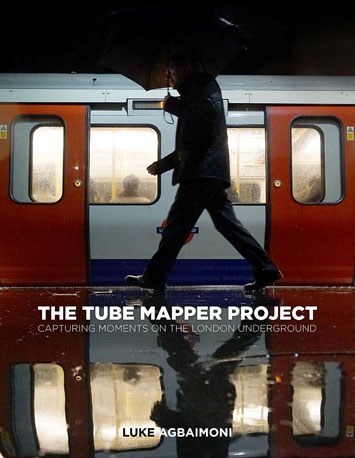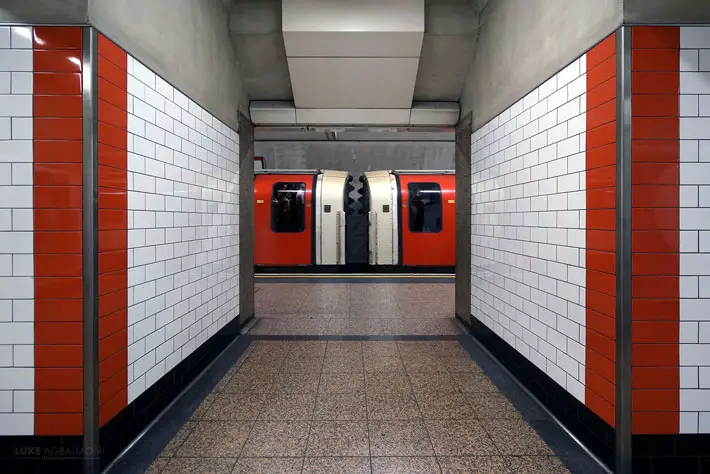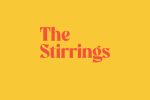The Tube Mapper Project by Luke Agbaimoni – Review

By Richard Mansfield
London’s underground, with its long-lived and distinctive logo, is probably most recognised and sometimes grudgingly appreciated for its simple utilitarian purpose of getting us from A to B within our over-crowded metropolis. Packed, claustrophobic coaches, tunnelled walkways taking us deeper into the nether regions beneath the city, platforms full of jostling people or dawdling folk off the pace to those on more urgent purpose, the noise, the heat, the need to change trains and make snappy connections via even more tunnels, stairs, lifts and escalators can make it feel an uncomfortable, and perhaps even threatening experience.
And yet, in the off-peak hours of darkness, and frequently after rain, with puddles and sometimes a feeling of near solitude, it seems the network can transform itself into something very different if you have the vision, imagination and a camera’s eye, especially one guided by Luke Agbaimoni’s aesthetic. It is one that takes the mundane and prosaic and brings it close to glamour and glitz. It presents a kind of ‘Cinderella’ tale of getting to the ‘Ball’.
This art graduate, who specialised in Graphic design, some years ago won a camera in a competition set by Transport for London and thereupon embarked on teaching himself how to use it, all the time working in his day job in an unrelated field.

On his journeys, using the underground system, he saw the visual potential that this rail network and its infrastructure offered and set about a three-year-long project of exploring the system’s visual and perhaps largely unappreciated splendours. He has compiled a collection of shots from which this two hundred and twenty three page book is taken. Commentary and technical stuff is kept to a minimum, but is informative, and the pictorial impact is accompanied on occasion by brief poems contributed by others.
“Attention to detail”
I understand Luke Agbaimoni to have commented that he has ‘a special love for dusk and night photography, enjoying the technical challenges of low light images’. While many images, some in black and white, reflect that passion, others are awash with colour, light and motion, so it becomes a succession of dramatic changes of mood and impact.
Some shots are taken with the camera resting on the floor, looking across puddled or gathered water on platforms with a quest for reflections and symmetries in composition that are stunning. With tripods apparently and understandably banned from the Underground, those pictures not taken at literal ground level are shot with the camera hand held, but you wouldn’t really know it.
This photographer’s attention to composition is patient and thorough and he comments that he will loiter for up to an hour in a particular location, considering what he wants to achieve and sometimes waiting for the coincidence of two trains passing in opposite directions or one emerging from a tunnel while on the other adjacent track is just disappearing into one from the station. This attention to detail and expectation shows very much in what he produces here.
But does he himself do a litter pick before clicking the button I wonder? For, quite remarkably perhaps, every picture is devoid of it. To me it feels to be the only feature that might be contrived, but then Luke’s visions of beauty and the crispness of his images leave no room for any debris that would tarnish the impact of the scene.
“Ethereal quality”
The seven substantive chapters in the book each reflect a theme the photographer is seeking to capture, such as ‘Underground Symmetry’, ‘Lines of Light’, ‘Waiting for Trains’ etc. These symmetries and the reflections that he captures are quite amazing, especially with the frequent juxtaposition of static or walking figures silhouetted against background of trains in motion. In fact in many shots I found an almost ethereal quality, but one augmented brightly by colour and dynamism.
Are there echoes within this collection of ‘moments’? Figures and silhouettes are sometimes caught mid-stride and this reminded me of Cartier-Bresson’s figure in ‘Pont de l’Europe, Paris’ taken in 1932. And sat at the end of the platform at Brockley Station that night, might it have been ‘Macavity – The Mystery Cat’ in watchful pose?
One small criticism, and this may have more to do with the publisher’s requirements than the photographer’s, is that some pictures span the fold between two pages. Whilst this may contribute to the symmetry in some way, it can be a mild irritant when the crease splits the human silhouette in the very middle of the shot and, to gain full benefit of the composition, it is necessary to press each page flat with each hand, but it is a small price to pay. Also, for those not familiar with the city and suburbs of London, might a map of the system have been useful to relate to inside the back cover? Small beer really.
Luke Agbaimoni is to be congratulated on this fine collection of striking images and scenes, ones that offer such a glamorous perspective, a perspective whose potential we frequently don’t see until someone with this photographer’s talent illustrates it for us.
‘The Tube Mapper Project: Capturing Moments on the London Underground’ by Luke Agbaimoni is published by The History Press, £20 hardback










